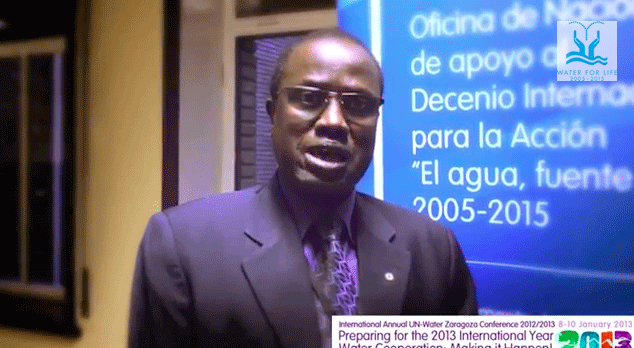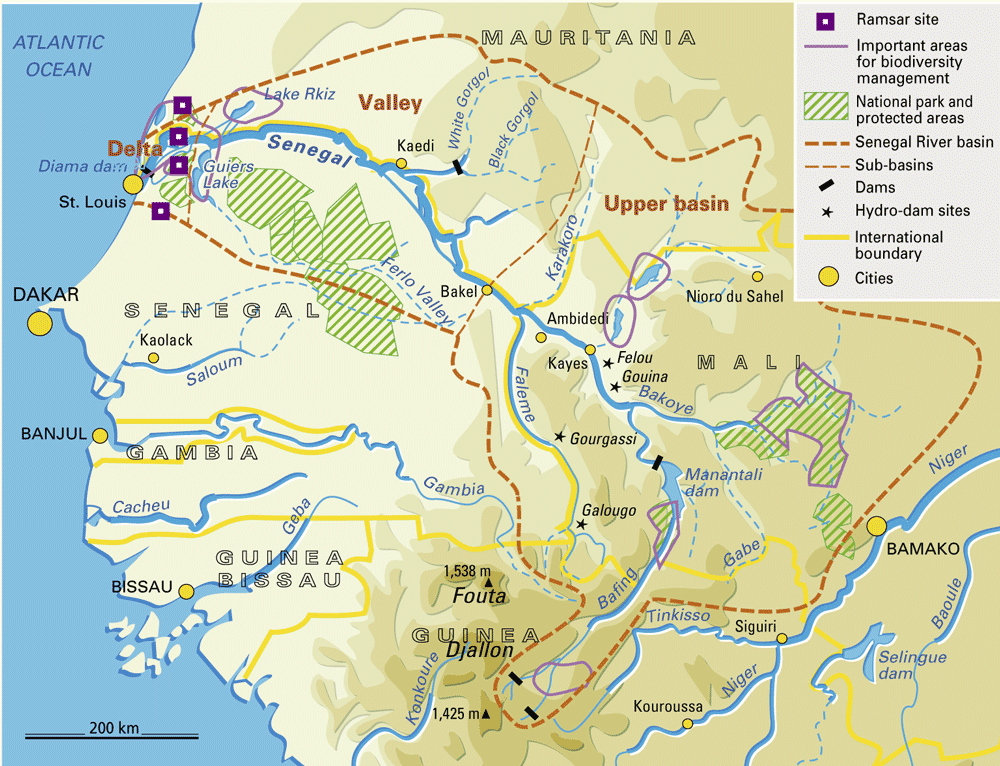- ON THE DECADE
- THE DECADE'S CAMPAIGN
- REPORTING ON PROGRESS
- THE DECADE'S PROGRAMMES
- FOCUS AREAS
-
- Access to sanitation
- Financing water
- Gender and water
- Human right to water
- Integrated Water Resources Management
- Transboundary waters
- Water and cities
- Water and energy
- Water and food security
- Water and sustainable development
- Water and the green economy
- Water cooperation
- Water quality
- Water scarcity
- FOCUS REGIONS
- RESOURCES FOR
- UN e-RESOURCES
International Annual UN-Water Zaragoza Conference 2012/2013
Preparing for the 2013 International Year. Water Cooperation: Making it Happen! 8-10 January 2013
The Senegal River
 Interview with Tamsir Ndiaye.
Interview with Tamsir Ndiaye. Director of Environment and Sustainable Development Affairs at the Organisation pour la Mise en Valeur du Fleuve Sénégal.
Director of Environment and Sustainable Development Affairs at the Organisation pour la Mise en Valeur du Fleuve Sénégal. With a length of 1,800 km, the Senegal Rivercrosses Guinea, Mali, Mauritania and Senegal. The river basin extends over 337, 500 km² and has a population of around 3,500,000 inhabitants (16% of the total populations of these states). The Senegal River has a long history of water cooperation among the basin states (dating back to the colonial times) and some 13 international agreements have been signed. A milestone in this history was the creation in 1972 of the Organisation pour la Mise en Valeur du Fleuve Sénégal (OMVS) when the basin countries were experiencing the worst drought in decades. The document signed by the 4 countries follows the legislation of the 4 countries and gives the Commission the possibility of managing water. Countries agreed that the Commission controls and monitor the river courses. It has the capacity to regulate the networks, electrical grids to facilitate the transport and navigation, allowing industrial development in the area. A very unique element of this cooperation is the shared property of the dams that were constructed along the river, owned by three countries: Mauritania, Mali and Senegal, which is quite exceptional on a transboundary river.
Over time cooperation and negotiations between the 4 countries have continued even when there have been disagreements. There have been some failures often due to “micro-nationalisms” and the desire of some to act independently. However, no country could find proper funding on their own. Now cooperation is successful, in part because it has included different categories of stakeholders. The permanent commission is composed by the technical services of the state, management agencies of the state, different users, different associations. The representatives of the water users, the NGOs are now interested on how this is managed. Every state has had a representation, including the scientific community. The experts committee meets every 3 months to study the new activities that are going to take place. In this context it is the final user who plans and designs the uses (there are ecologists, scientists, academics, politicians).
For stakeholder involvement communication is a problem: A problem is the illiteracy in some cases in these countries. There are also communication problem and conflicts that appear at different levels: politicians, scientific community, etc. Communication needs to highlight that the organization was created for the benefit of the 4 of countries. The cost benefit model can provide equality.
Despite a good level of cooperation and the existence of institutional arrangements, riparian states still face many challenges due to climate change, poverty and mitigation of environmental and human impacts of the dams (public health).
>> Organizers
>> Key questions
>> Expected outcomes
>> Agenda
>> Participants
>> International Year and WWD 2013
>> UN initiatives on water cooperation
>> UN Water Convention
>> UN Watercourses Convention
>> Challenges for water cooperation
>> Addressing cooperation: tools and mechanisms
>> Mediation and dispute resolution mechanisms
>> Alternative Dispute Resolution Approaches
>> Water cooperation: nations and stakeholders
>> Water cooperation in rural areas
>> Water cooperation in cities
>> Interview questions for case study presenters
>> World Water Day 2013
>> World Water Week 2013
>> The UN Global Compact
>> Intensively developed aquifers
>> Stakeholders platforms in Spain
>> Field visits
>> Cases on water cooperation
>> Conference daily
>> Conference flyer
>> Conference interviews
>> Conference poster
>> Information briefs
>> Presentations from participants
>> UN water cooperation reports
>> Video interviews with participants
>> Video recording of sessions
>> Water cooperation in the media
>> Web banners
Copyright | Terms of use | Privacy notice | Site Index | Fraud alert | Help





